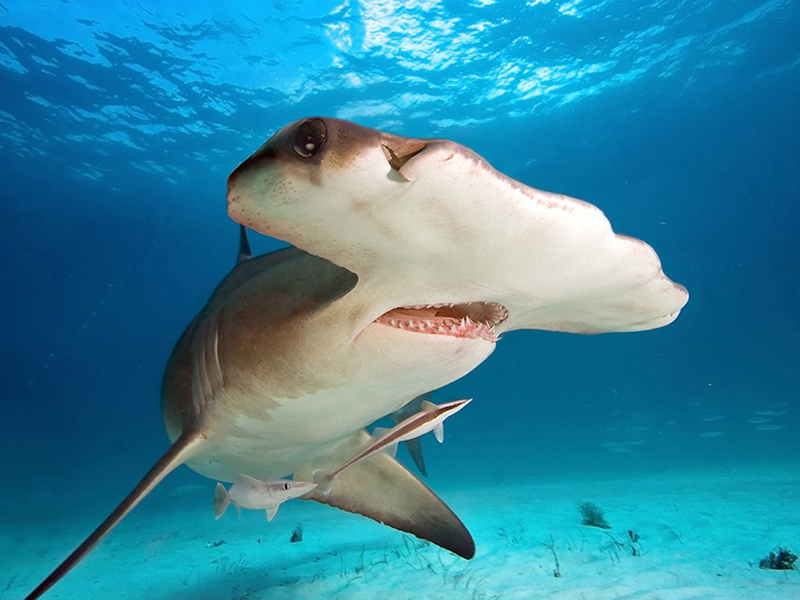
If you didn't know better, might think nature played a cruel trick on hammerhead sharks. But in reality, what at first glance might seem like a deformity actually provides these apex predators with some unique advantages that help them stay at the top of the food chain.
So what's the actual benefit of an extra-wide head? Some divers might tell you that the spoiler-shaped front end helps the hammerhead move through the water more efficiently. Not true.
Others have speculated that it's the equivalent of a biological radar antenna. There's some truth to this. Like all sharks and most rays, hammerheads have organs in their heads known as Lorenzini ampullae that can detect faint electrical fields emitted by prey. Having a wider forehead does allow for a broader spread of these radar-like sensors, and hammerheads are particularly good at locating prey hiding under a mud or sand bottom.

But the real reason for the wide head is vision. While the wide-set eyes of a hammerhead give them an almost comical cross-eyed appearance, this arrangement actually creates a significant enhancement in visual capabilities. Wide-set eyes increase depth perception, making it easier to judge distances when zeroing in on a meal. In addition, much like a security camera mounted on a pole, a hammerhead's outboard eye sockets provide extra-wide fields of view in all directions, including above, below and behind. With both eyes working together, some species of hammerheads actually have 360-degree sight, making them one of the keenest-eyed predators in the world.
There's some argument as to how many species of shark actually fall in the hammerhead family, but most marine biologists set the number at nine. Most are on the smallish size, with names like scoop-head and bonnet-head. If you are diving in parts of the Indian Ocean or Western Pacific, you might catch a glimpse of a wing-head shark, which has the most exaggerated hammer of all.
The two species that get divers excited are the scalloped hammerhead, which can reach lengths of 10 to 12 feet, and the big kahuna of the group, the great hammerhead, which can tip the scales at 1,000 pounds and reach lengths of 18 feet.

Scalloped hammerheads like to travel in groups. In places like Costa Rica's Cocos Islands, Mexico's Soccoros Islands and Colombia’s Malpelo Island, it's possible to swim into schools numbering into the hundreds. Since these sharks hunt at night singularly or in small groups, scientists don't have a good explanation as to why the sharks form large groups during the day. One thought is that they simply like being together.
By contrast, great hammerheads tend to be loners, and there's no telling when one might show up. They will sometimes make an appearance during shark feeds that take place in the Bahamas, Fiji and elsewhere, and there's a good chance of seeing one or more when diving the passes in Tahiti or at Red Sea dive sites like the Brothers. One of the best bets for a great hammerhead sighting is a dive in the shallow sand banks near the Bahamas island of Bimini. Each winter from December through March, the hammerheads gather in these waters, and it can be quite a show.

Ready to dive with a hammerhead? Get in touch with your Caradonna agent to start planning the adventure.